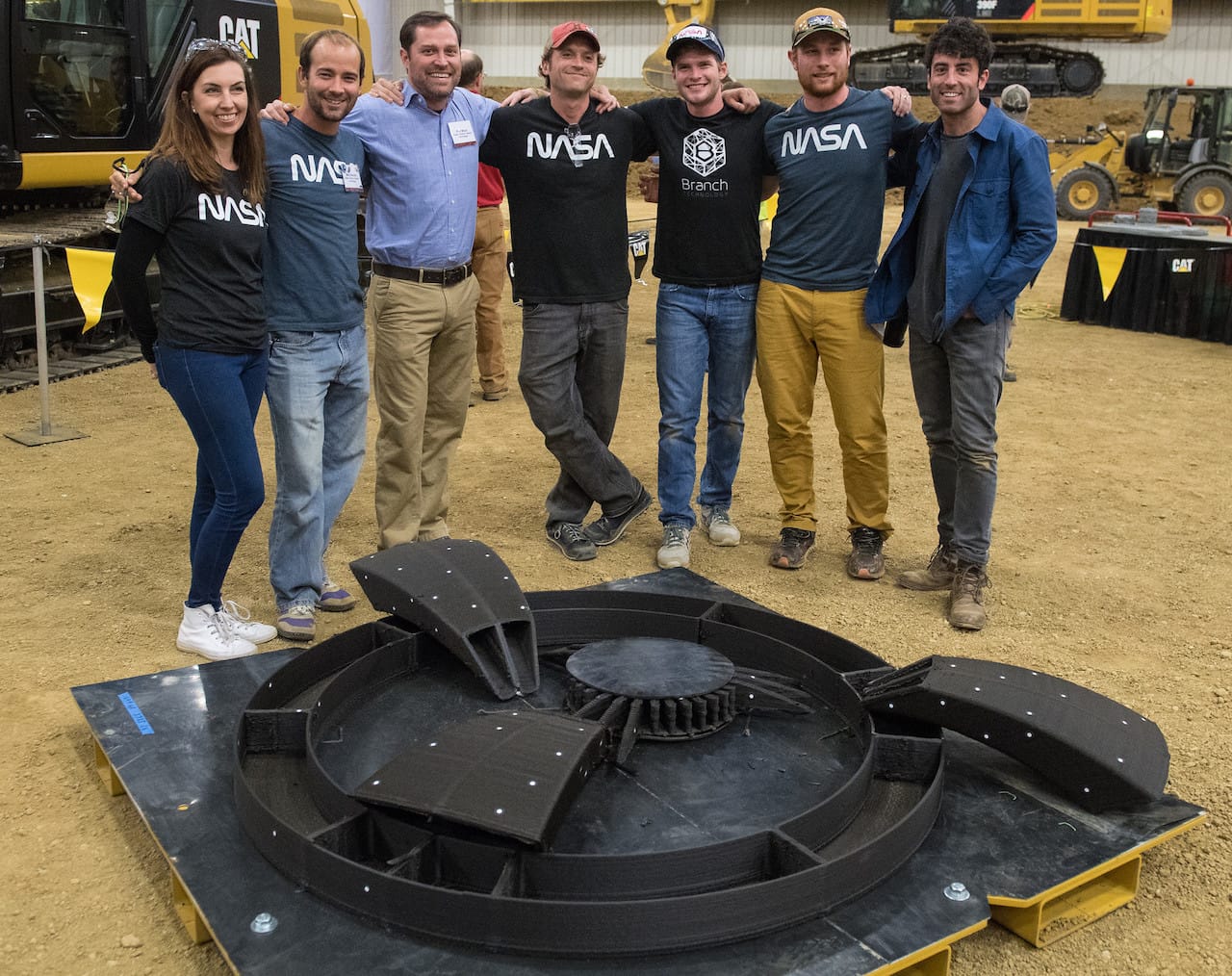
The ongoing 3D print innovation challenge by NASA has awarded USD$400,000 to two entrants.
The NASA challenge is attempting to identify approaches for using 3D printing technologies to 3D print usable structures on the Moon and beyond. The idea is that 3D printing using locally available materials would be dramatically less expensive than shipping entire habitats from Earth, where every kg counts during launch.
Rather than developing the technology themselves, NASA engaged in a public contest where entrants come up with their own designs and approaches and compete in a fair contest to see which approach is superior.
The challenge is a multi-phase affair, in which teams are requested to meet progressively more difficult challenges. Some teams drop out, but the survivors will reveal approaches that actually work. Ultimately, a winning approach could be used on an actual flight test.
I’m keen on this approach as the Darwinian contest method is fair: judgements are done using actual numbers from result measurements, as NASA explains:
Teams were required to develop the fundamental 3-D printing technology necessary to produce a structurally sound habitat, including the printer itself and construction materials. Competitors then had to print beams, cylinders and domes that were analyzed and compressed to failure to determine scores and prize awards.
That also tells you about this phase, where actual 3D printed parts were developed and tested under stress conditions. One of the key questions I’m wondering about is whether the printing material will be solely from local materials (example: lunar regolith, that dusty stuff on the surface of our nearest celestial body), or if a supplemental material (a binding resin, for example) might have to be shipped along from Earth, slightly compromising the goal.
The winning team from Chattanooga, Foster + Partners, was awarded a huge USD$250,000 amount, while the second place finisher, a team from Pennsylvania State University of University Park, won USD$150,000. That cash should help these teams address the next phase of the challenge.
I continue to be interested in this particular challenge as I expect the results to be a key part of our amazing future. The ability to 3D print lunar structures, combined with coming very low-cost access to space could prove very interesting. It’s no wonder a number of teams are pursuing this goal, as it could become a large, complex and exciting market for the future of 3D printing.
Via NASA

